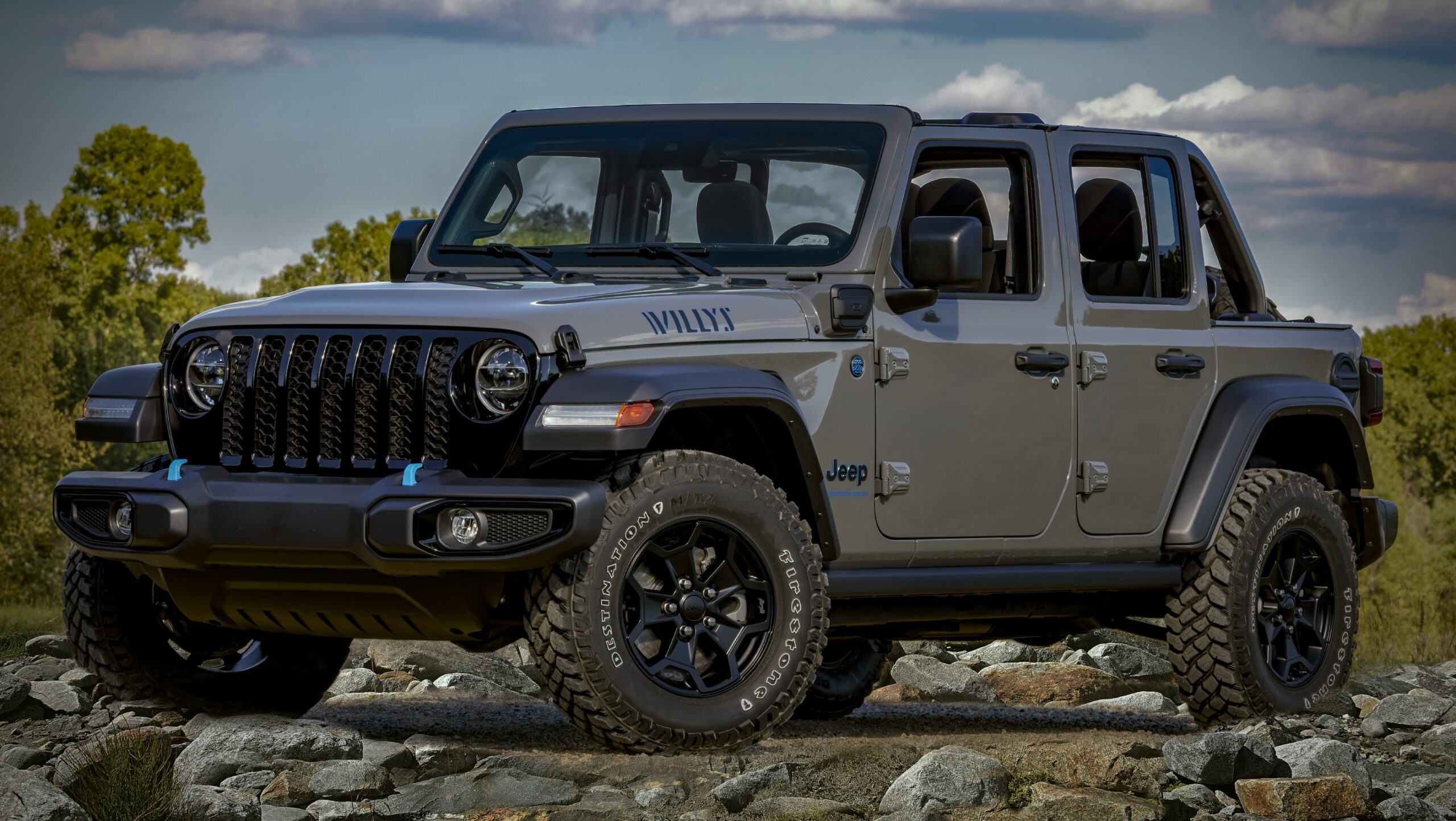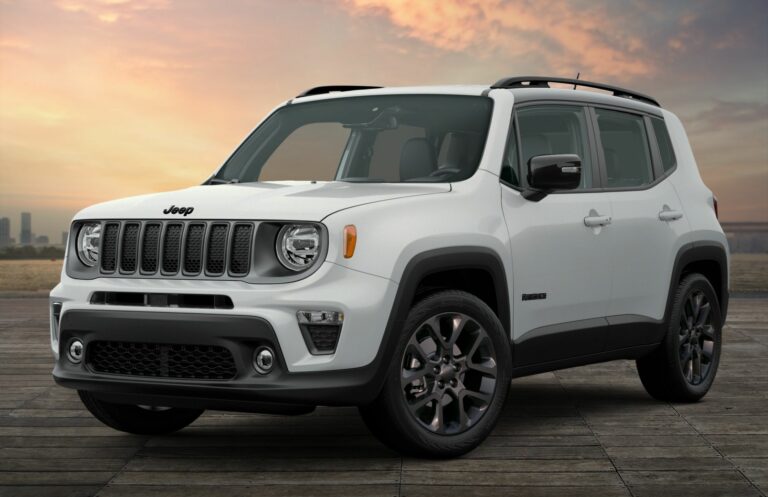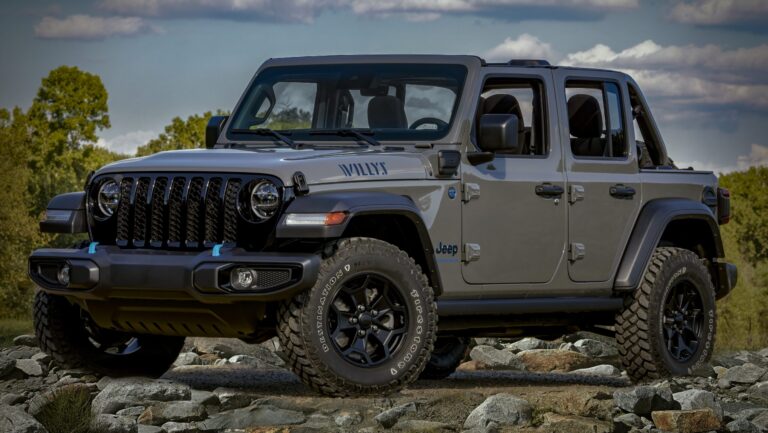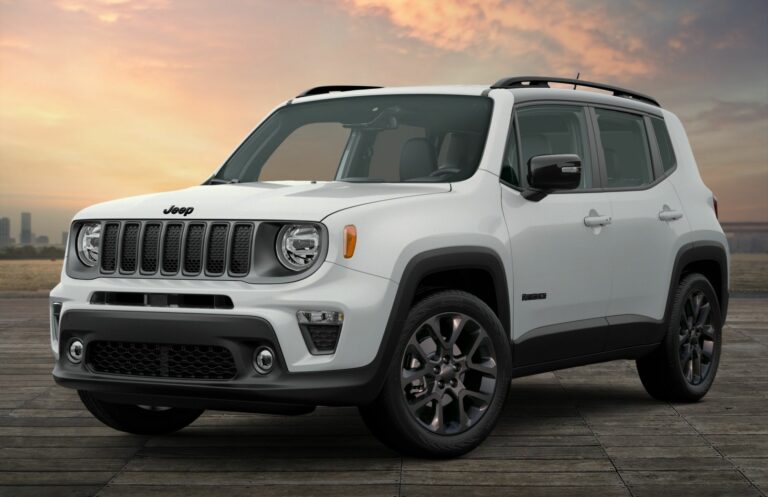Jeep Wagoneer Parts For Sale: Your Ultimate Guide to Keeping the Legend Alive
Jeep Wagoneer Parts For Sale: Your Ultimate Guide to Keeping the Legend Alive jeeps.truckstrend.com
The Jeep Wagoneer, particularly the beloved Grand Wagoneer of the 1980s and early 90s, isn’t just a vehicle; it’s an icon. A quintessential blend of rugged utility and luxurious comfort, it pioneered the luxury SUV segment long before it became mainstream. Its timeless design, distinctive woodgrain paneling, and robust drivetrain have cemented its place in automotive history and in the hearts of enthusiasts worldwide.
However, owning a classic vehicle, especially one that ceased production decades ago, comes with its unique set of challenges. Chief among them is sourcing the right parts to maintain, repair, or restore these magnificent machines. The quest for "Jeep Wagoneer Parts For Sale" is a continuous journey for owners, ranging from those seeking a simple replacement bulb to ambitious restorers embarking on a full frame-off rebuild. This comprehensive guide will navigate the intricate world of Wagoneer parts, offering insights, tips, and resources to help you keep your legend on the road.
Jeep Wagoneer Parts For Sale: Your Ultimate Guide to Keeping the Legend Alive
The Enduring Appeal and the Necessity of Parts
The enduring appeal of the Jeep Wagoneer lies in its unique character and the nostalgia it evokes. It represents a simpler time, a symbol of adventure and understated elegance. As these vehicles age, wear and tear become inevitable. Rubber perishes, metal rusts, electrical components fail, and interiors show their decades of use. Without a steady supply of parts, these cherished classics would slowly fade into obscurity.
The market for Wagoneer parts is vibrant and diverse, driven by a passionate community of owners, mechanics, and specialized vendors. Whether you’re looking for original equipment (OE) parts, new old stock (NOS), high-quality reproduction components, or reliable used parts, understanding the landscape is crucial to a successful and cost-effective restoration or repair.
Understanding the Ecosystem of Wagoneer Parts
The world of Jeep Wagoneer parts is multifaceted, offering various options depending on your needs, budget, and commitment to authenticity.
1. New Old Stock (NOS) Parts
NOS parts are original manufacturer parts that were produced decades ago but were never sold or installed. They are essentially brand new, genuine parts.
- Pros: Perfect fit, original quality, authenticity, ideal for concours restorations.
- Cons: Extremely rare, often very expensive, limited availability. Finding NOS parts can feel like finding buried treasure.
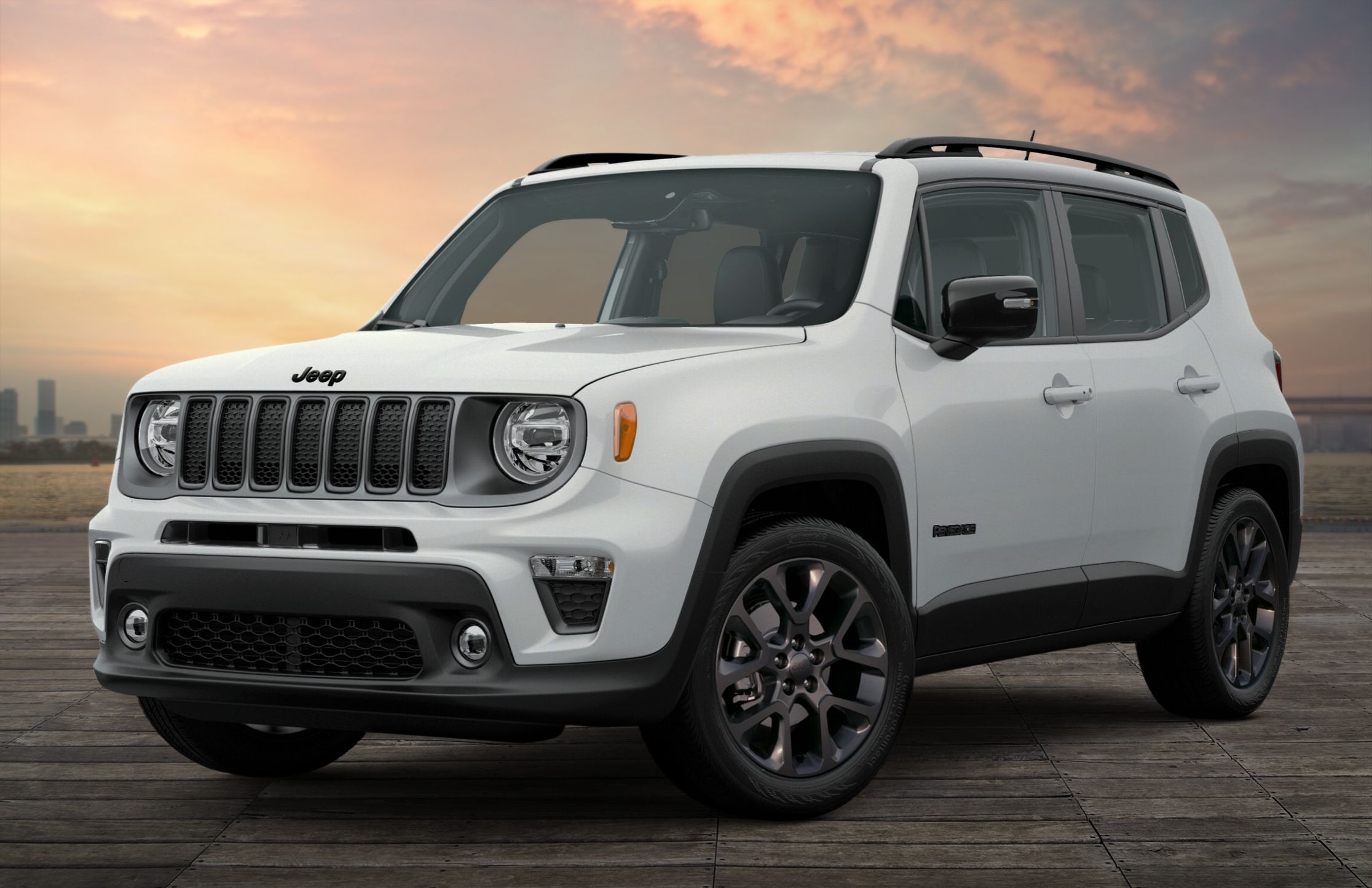
2. Reproduction Parts
With the increasing scarcity of NOS parts, many manufacturers have stepped in to produce reproduction components. These are newly manufactured parts designed to replicate the original specifications.
- Pros: Readily available, often more affordable than NOS, can incorporate modern manufacturing improvements (e.g., better rust protection).
- Cons: Quality can vary significantly between manufacturers, some parts may not be an exact fit without minor modifications, authenticity might be a concern for purists. Always research the reputation of the reproduction parts supplier.
3. Used/Salvaged Parts
These are parts pulled from donor vehicles, often from salvage yards or other Wagoneers being parted out.
- Pros: Most affordable option, good for hard-to-find components, provides original patina for less critical parts.
- Cons: Condition can vary wildly (wear, rust, damage), no warranty, may require cleaning or refurbishment, authenticity of wear. Thorough inspection is critical.
4. Aftermarket Upgrades
Beyond direct replacements, a robust aftermarket offers parts designed to improve performance, comfort, or aesthetics. This includes upgraded suspension components, modern engine management systems, improved braking kits, and custom interior pieces.
- Pros: Enhance vehicle performance, reliability, and usability, customize your Wagoneer to your preferences.
- Cons: May deviate from original specifications, potentially higher cost, can be overwhelming with choices.
Key Categories of Jeep Wagoneer Parts
To help you navigate your search, here’s a breakdown of common parts categories you might encounter:
Engine & Drivetrain Components
The AMC 360 V8 engine is the heart of most later model Wagoneers. Parts for this robust engine are relatively common due to its widespread use in other AMC and Jeep vehicles.
- Examples: Engine rebuild kits, gaskets, seals, carburetors (or fuel injection conversion kits), water pumps, alternators, starters, transmissions (TorqueFlite 727, 904), transfer cases (NP208, NP229), axles (Dana 44 front/rear), differentials, driveshafts.
Body & Exterior Parts
These are often the most visible and sought-after parts, particularly for rust repair and aesthetic restoration.
- Examples: Fenders, quarter panels, rocker panels, floor pans, tailgate assemblies, doors, door skins, hood, grille, bumpers (front and rear), chrome trim, emblems, all-important woodgrain trim kits, headlight bezels, taillight lenses, mirrors, window glass, weatherstripping, and body mounts.
Interior Components
Restoring the luxurious interior is key to bringing a Wagoneer back to its former glory.
- Examples: Seat upholstery kits (leather, velour), foam cushions, carpet kits, headliners, dash pads (prone to cracking), steering wheels, door panels, window switches, power lock actuators, gauges, clock, HVAC controls, original radios, interior trim pieces.
Chassis & Suspension Parts
These components are vital for ride quality, handling, and safety.
- Examples: Leaf springs, shock absorbers, steering boxes, tie rods, drag links, ball joints, control arm bushings, sway bar links, brake calipers, rotors, drums, brake lines, master cylinders, power steering pumps, fuel tanks, fuel lines.
Electrical Components
The electrical system in older vehicles can be a common source of issues.
- Examples: Wiring harnesses, headlight switches, wiper motors, power window motors, blower motors, relays, fuses, ignition components (distributors, coils, modules), sending units (fuel, temperature, oil pressure), instrument cluster components.
Accessories & Unique Items
Sometimes it’s the small, unique details that complete a restoration.
- Examples: Original roof racks, factory mud flaps, spare tire carriers, specific tools, owner’s manuals, period-correct radios, specialized trim pieces.
Where to Find Jeep Wagoneer Parts For Sale
Finding the right parts requires knowing where to look. The internet has revolutionized the search, but traditional methods still hold value.
- Specialized Online Retailers: Several reputable companies specialize exclusively in Jeep Wagoneer parts. These vendors often stock a wide range of reproduction, NOS, and even rebuilt components, offering technical support and a degree of quality assurance. Examples include BJ’s Off-Road, Team Grand Wagoneer, and various smaller independent shops.
- Online Marketplaces:
- eBay: A treasure trove for both new and used parts. Be specific with your search terms and carefully review seller ratings and item descriptions.
- Facebook Marketplace & Groups: Dedicated Jeep Grand Wagoneer groups on Facebook are incredibly active. Owners often part out vehicles, sell surplus parts, or connect buyers with sellers. This is an excellent resource for community-driven sales.
- Wagoneer-Specific Forums & Clubs: Online forums (e.g., IFSJA.org for Full-Size Jeeps) and local clubs are invaluable. Members often buy, sell, and trade parts, and offer advice on where to find specific items.
- Salvage Yards/Junkyards: While increasingly rare to find intact Wagoneers, older junkyards, especially those specializing in classic American vehicles, might still yield usable parts. Call ahead to check inventory.
- Swap Meets & Car Shows: Attending classic car shows and vintage parts swap meets can be a great way to find unique or rare items, and to network with other enthusiasts and vendors.
Tips for Buying Jeep Wagoneer Parts
Successfully acquiring the right parts involves more than just knowing where to look.
- Know Your Vehicle: Understand your Wagoneer’s specific year, trim level, and any modifications. Small differences in model years can mean different part numbers. Having your VIN can often help confirm exact specifications.
- Research Sellers: Especially when buying from independent sellers or new reproduction manufacturers, check reviews, forum discussions, and their return policies.
- Inspect Parts Thoroughly: For used parts, ask for detailed photos from multiple angles. Look for cracks, excessive rust, stripped threads, or signs of improper repair. For electrical components, ask if they were tested.
- Understand Return Policies: What happens if the part doesn’t fit or is defective? Ensure you have recourse.
- Be Wary of "Too Good to Be True" Deals: Extremely low prices for rare or expensive parts can be a red flag.
- Factor in Shipping Costs: Large or heavy parts can incur significant shipping fees. Get a shipping quote before committing to a purchase.
- Join the Community: Engage with other Wagoneer owners. Their collective experience is an invaluable resource for finding parts and avoiding pitfalls.
Challenges and Solutions
Finding parts for a vintage vehicle like the Wagoneer isn’t without its hurdles.
- Rarity of Specific Parts: Some components, particularly unique trim pieces or certain electrical modules, are exceedingly rare.
- Solution: Patience is key. Expand your search to international markets if possible. Consider having a part custom fabricated if it’s critical and unobtainable. Leverage the community for leads.
- High Cost of NOS/Quality Reproduction: Demand for these parts can drive prices up significantly.
- Solution: Budget wisely. Prioritize critical safety and mechanical parts. For cosmetic items, consider quality used parts or less expensive reproduction alternatives if absolute authenticity isn’t a top concern. Wait for sales or group buys from vendors.
- Quality Control for Reproduction Parts: As mentioned, quality varies.
- Solution: Stick with reputable vendors known for high-quality reproductions. Read reviews and ask for feedback from other owners before purchasing. Sometimes, a slightly higher price means a significantly better fit and durability.
- Shipping Large/Fragile Parts: Body panels, glass, or delicate interior pieces require special handling.
- Solution: Work closely with the seller to ensure proper packaging (crating for glass/body panels). Consider freight shipping for very large items. Factor insurance into your shipping costs.
Estimated Price Guide for Jeep Wagoneer Parts
It’s important to note that prices for Jeep Wagoneer parts fluctuate significantly based on condition, rarity, seller, and current market demand. The table below provides estimated ranges for common parts, serving as a general guide rather than definitive pricing.
| Part Category | Specific Part Example | Estimated Price Range (USD) | Notes |
|---|---|---|---|
| Engine & Drivetrain | AMC 360 V8 Rebuild Kit | $600 – $1,500+ | Varies by completeness (pistons, cam, bearings, gaskets). |
| Carburetor (Remanufactured) | $300 – $700 | For original Motorcraft 2150/2100. EFI conversion kits are significantly more ($1,500 – $3,000+). | |
| Water Pump | $50 – $150 | Reproduction/aftermarket. | |
| TorqueFlite 727 Transmission | $800 – $2,500+ | Remanufactured unit. Used: $200 – $800 (condition dependent). | |
| Transfer Case (NP229/208) | $500 – $1,800+ | Remanufactured. Used: $150 – $600. | |
| Body & Exterior | Woodgrain Decal Kit | $400 – $1,000+ | High-quality reproduction kits are essential for appearance. Price varies by completeness and material. |
| Full Weatherstripping Kit | $300 – $700 | Includes doors, windows, tailgate. Critical for preventing leaks and rust. | |
| Front Fender (Reproduction) | $400 – $800 | Used fenders (rust-free) can be similar or higher if rare. | |
| Tailgate (Used) | $250 – $1,000+ | Highly variable based on rust, glass condition, and whether motor/mechanism are included. | |
| Bumper (Front/Rear, Reproduction) | $300 – $600 (each) | Chrome condition is key. Used: $100 – $400, often needs re-chroming. | |
| Door Glass | $100 – $300 (each) | Reproduction or used. | |
| Interior | Leather Seat Upholstery Kit | $1,500 – $3,500+ | For front and rear seats. Custom options can be much higher. |
| Carpet Kit (Full) | $300 – $700 | Reproduction, molded to fit. | |
| Dash Pad (Reproduction) | $400 – $800 | Critical replacement due to common cracking in originals. | |
| Power Window Motor | $80 – $200 (each) | Reproduction or used. | |
| Chassis & Suspension | Leaf Springs (Set of 4) | $400 – $800 | New aftermarket. OEM/NOS would be rare and expensive. |
| Shock Absorbers (Set of 4) | $100 – $300 | Aftermarket, various brands. | |
| Brake Master Cylinder | $70 – $180 | New aftermarket. | |
| Power Steering Pump | $100 – $300 | Remanufactured or new aftermarket. | |
| Electrical | Wiring Harness (Full) | $800 – $2,500+ | Reproduction, often custom-made to order. Can be very expensive but critical for reliability. |
| Headlight Switch | $50 – $150 | New reproduction. | |
| Tailgate Window Motor | $150 – $400 | New reproduction or rebuilt. Often requires specialized knowledge to install. |
Disclaimer: The prices listed above are estimates only and are subject to significant change based on market demand, part availability (NOS vs. reproduction vs. used), vendor, and condition. Always verify current pricing with sellers.
Frequently Asked Questions (FAQ) about Jeep Wagoneer Parts For Sale
Q1: Are Jeep Wagoneer parts still readily available?
A1: Yes, many parts are still available! While NOS (New Old Stock) parts are becoming rarer and more expensive, a robust market of reproduction parts, high-quality used parts, and aftermarket upgrades exists. Specialized vendors and a strong online community ensure that most components can be sourced.
Q2: Where is the best place to find specific or hard-to-find Wagoneer parts?
A2: Start with specialized online retailers dedicated to Wagoneers (e.g., BJ’s Off-Road, Team Grand Wagoneer). For truly rare items, scour eBay, participate actively in Jeep Grand Wagoneer Facebook groups, and join dedicated online forums like IFSJA.org, where members often trade or sell parts.
Q3: How do I know if a reproduction part is good quality?
A3: Research is key. Look for reproduction parts from established vendors with positive reviews. Check community forums for discussions on specific reproduction parts and their fit/quality. Sometimes, paying a little more for a known reputable brand can save you headaches later.
Q4: How can I ensure a part is correct for my specific Wagoneer model year?
A4: Always confirm the part number if possible. Provide your vehicle’s exact year, model, and trim level to the seller. Having your VIN (Vehicle Identification Number) can be helpful, as some parts vary even within the same model year due to production changes.
Q5: Can I use parts from other Jeep models or AMC vehicles on my Wagoneer?
A5: Sometimes, yes. Many mechanical components, especially engine parts (like the AMC 360 V8), transmissions (TorqueFlite 727), and some drivetrain components, were shared across various AMC and Jeep models. However, body panels, interior trim, and specific electrical components are often unique to the Wagoneer. Always cross-reference part numbers or consult a Wagoneer expert before purchasing.
Q6: Is it expensive to restore a Jeep Wagoneer?
A6: Yes, a full, high-quality restoration of a Jeep Wagoneer can be quite expensive, often ranging from $20,000 to well over $60,000, depending on the initial condition of the vehicle and the level of restoration desired. Parts costs are a significant factor, especially for bodywork, interior components, and specialized electrical systems. However, smaller repairs and gradual improvements can be managed on a more modest budget.
Conclusion: Keeping the Legend Alive
The journey of finding "Jeep Wagoneer Parts For Sale" is an integral part of owning and loving these classic vehicles. It’s a testament to the enduring appeal of the Grand Wagoneer that, decades after production ceased, a thriving ecosystem of parts and a passionate community of enthusiasts continue to support its legacy.
Whether you’re undertaking a complete frame-off restoration or simply keeping your daily driver running smoothly, understanding the types of parts available, knowing where to source them, and applying smart buying strategies will be crucial to your success. With patience, research, and the support of the global Wagoneer community, you can ensure that your iconic Jeep Wagoneer continues to cruise the roads, turning heads and reminding everyone of a golden era of American automotive design. The hunt for parts isn’t just about repair; it’s about preserving a piece of history and keeping the spirit of adventure alive.
